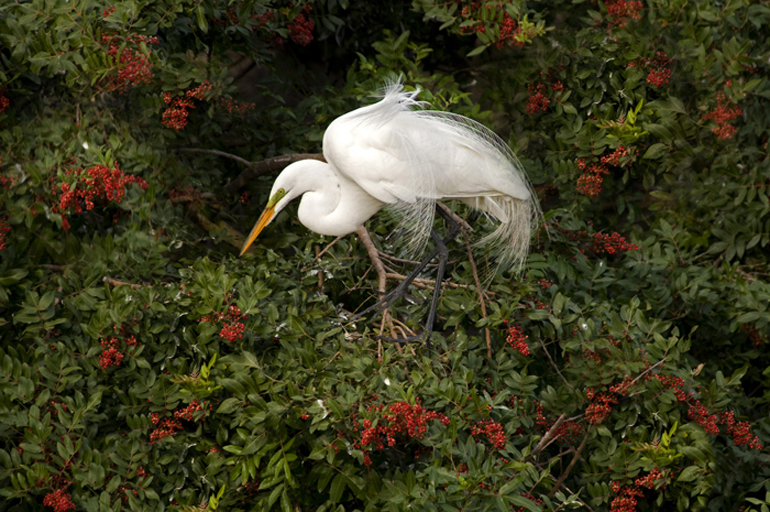
The United States at the turn of the 20th century was a land of farms and small towns. New York was our only large city and the word magacity hadn't even made the dictionary yet. Immigrants arrived on Ellis Island in droves, mostly from Europe in those days. A fledgling automobile industry was seen as no match for the horse and buggy in turn of the century rural America. Bison had all but disappeared from the western plains, reduced to a meager thousand, barely holding on in Yellowstone Park. In the nation's few urban centers the fashion of the day for women was the hat, the bigger the better, adorned with showy feathers and stuffed bird carcasses.
America was, however, poised for change. The concept of conservation was being whispered by a few visionaries who condemned what Thoreau called "our war with wilderness." And it was none too soon as developers stood at the rim of the Grand Canyon and roared, white-tailed deer were hunted to near extinction in some states, and more herons, egrets, and ibis adorned hats in cities than waded the Everglades.
The dawn of the new century saw help arrive in the form of advocates for wildlife. A sign of the new times took place on March 25, 1900, when Congress passed the Lacey Act, meant to stop the slaughter of wading birds by commercial hunters. It was a landmark piece of legislation that hinted at a new ethic. Less than a year later a man called "Teddy" became president, the first person ever to "carry a big stick" for conservation. His list of achievements protecting wilderness and wildlife have become legendary. His booming personality single-handedly launched what has become known as the Century of Conservation.